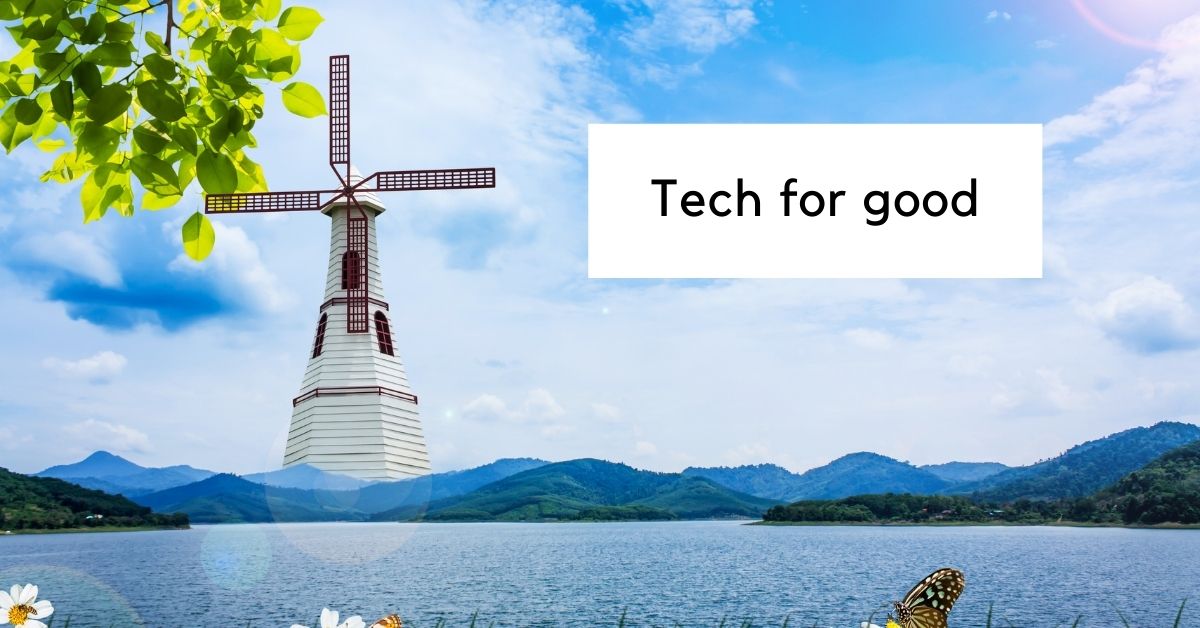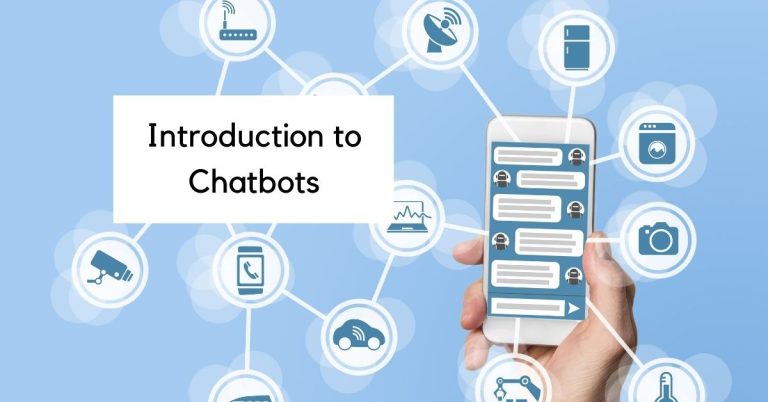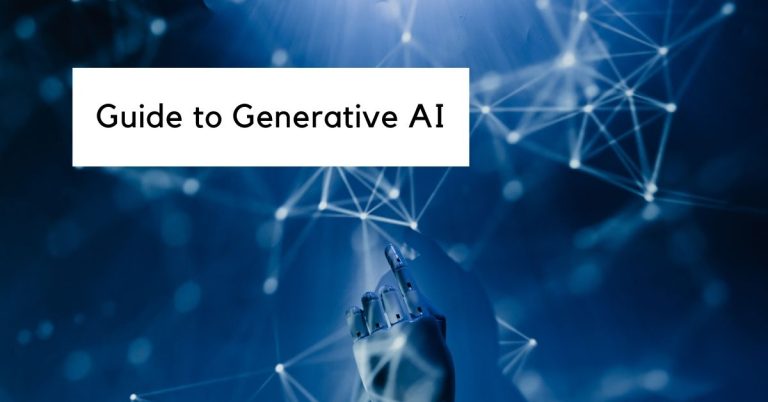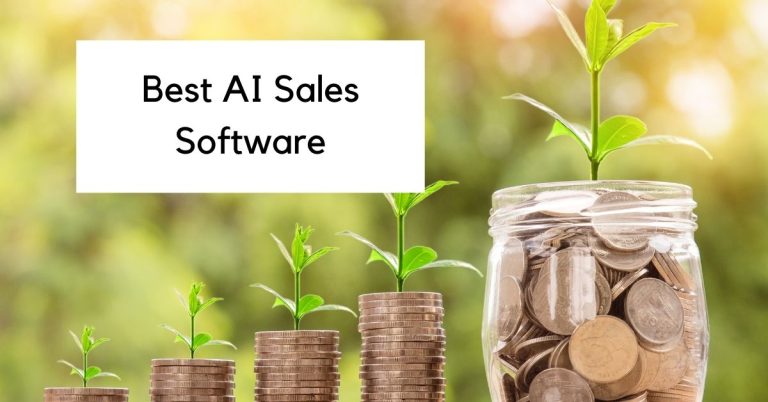Tech for good: Technologies trying to solve major global issues
Innovations in the areas of renewable energy, healthcare, and education, transform industries and improve people’s lives across the globe. They are instrumental in solving some of the world’s greatest challenges you face, and they may indicate some potential for a more sustainable and equitable world.
The other side of the coin to technosolutionism, the idea of using technology for good has gained momentum. More innovators and entrepreneurs focus on solutions that address critical global issues like climate change, poverty, and access to education and healthcare.
Through technology, we have access to greater resources and new ways to learn with far greater sustainability in everyday life.
The concept of tech for good
‘Tech for good’ refers to leveraging technology to create positive social, environmental, and economic impacts. This concept emerged in the 1990s and has gained traction as technology has become more pervasive in our everyday lives. It focuses on using innovative solutions to tackle significant global challenges, such as climate change, poverty, and access to healthcare.
For example, organizations like JP Morgan Chase host hackathons to empower underserved communities by teaching tech skills and fostering collaboration on real-world problems. Similarly, Avanade partners with nonprofits to provide affordable digital transformations that enhance their impact. Another notable example is the Ersilia Open Source Initiative, which uses machine learning to expedite drug testing for infectious diseases like malaria and tuberculosis. This initiative not only accelerates the development of treatments but also aligns with several United Nations Sustainable Development Goals.
While tech for good develops new technologies, it even means the potential for innovations that are accessible and beneficial to everyone. The idea is to use technology to create a better world for all, where everyone has the opportunity to thrive.
How technology is tackling global challenges
Technology-based innovation is opening up the avenues towards solutions of global challenges toward efficiency and accessibility. For instance, how advanced AI enabled organizations in handling oceans of data to predict natural disasters, optimize resources, improve healthcare, and the like.
An example: a report of the World Economic Forum shares that AI technologies are very helpful for monitoring changes in the environment and fast responding to climate-related crises like wildfires or flooding.
Renewable energy technologies are changing the way we produce power and cutting our carbon footprint. Improving efficiency and affordability make solar panels, wind turbines, and energy storage systems available for the many.
According to research from the International Renewable Energy Agency (IRENA), renewable energy sources accounted for nearly 30% of global electricity generation in 2020, showcasing their growing importance in combating climate change.
Technologies that help solve global challenges
A variety of technologies are emerging as powerful tools in the fight against global challenges. From renewable energy systems to AI-driven platforms, these innovations aim to improve lives while promoting sustainability. Here’s a look at technologies that try to make a difference around the globe.
Climate change solutions
Climeworks
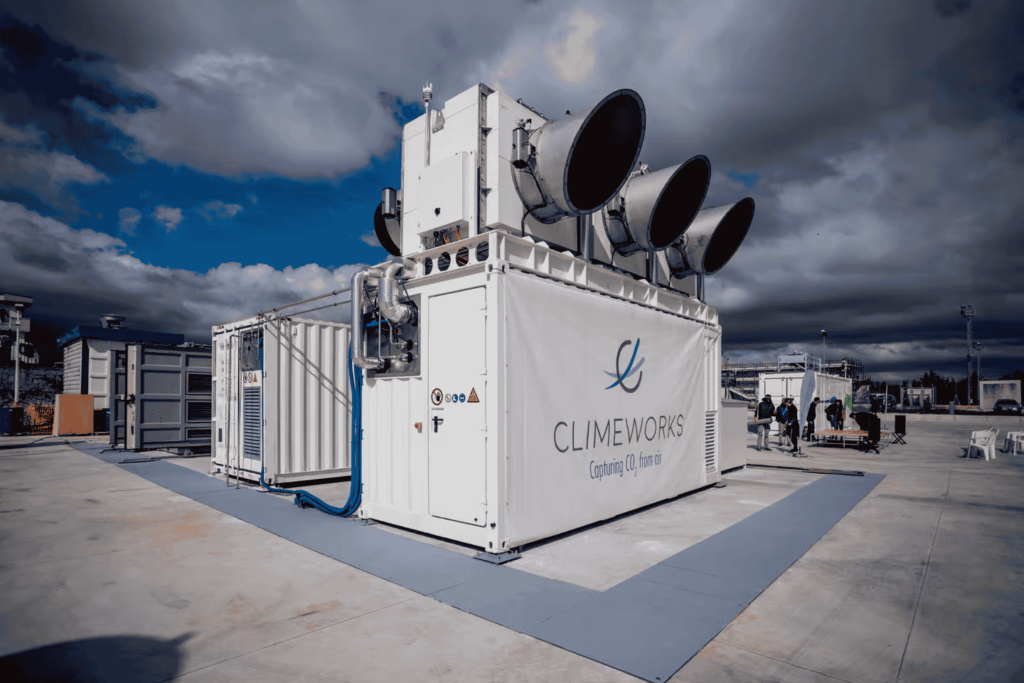
Climeworks is a pioneering company specializing in carbon dioxide removal through direct air capture (DAC) technology. Founded in Switzerland in 2009, it aims to combat climate change by capturing CO2 from the atmosphere and storing it underground. This innovative approach not only helps reduce greenhouse gasses but also supports various industries in their sustainability efforts.
Benefits
- Climeworks can capture CO2 directly from the air, offering a tangible solution to reduce atmospheric carbon levels.
- The company utilizes renewable energy sources, particularly geothermal power, which minimizes its carbon footprint during the capture process.
- Climeworks has developed third-party certified methodologies for its carbon removal, ensuring reliability and transparency in its operations.
Possible Ramifications
- While the $1,200 per ton of CO2 removed might limit access for smaller businesses or individuals today, economies of scale could eventually drive costs down, making it more accessible.
- Relying heavily on DAC technology might divert attention from other essential climate actions like reducing emissions at the source.
Bottom Line
Climeworks represents a significant step forward in the fight against climate change by providing a scalable method for carbon removal. While its high costs and reliance on technology highlight some challenges, it underscores the importance of integrating innovative solutions like DAC into a broader, more holistic approach. This should complement, not replace, crucial emission reduction efforts and systemic changes needed to tackle the climate crisis.
SunCulture

SunCulture focuses on sustainable agriculture by providing solar-powered irrigation systems to farmers in Africa. This innovation supports farmers by increasing crop yields, even in challenging climates.
Benefits
- Farmers using SunCulture’s systems can grow more food due to efficient irrigation methods. Farmers report up to 300% increase in crop production.
- Solar energy reduces operational costs compared to traditional diesel-powered irrigation.
- The use of renewable energy contributes to lower greenhouse gas emissions.
Possible Ramifications
- Some farmers may be hesitant to adopt new technologies due to lack of training or resources.
- The upfront cost of solar systems might be a barrier for some farmers, despite long-term savings.
Bottom Line
SunCulture’s approach to sustainable agriculture presents an innovative solution for food production and environmental conservation. While initial costs and technology adoption pose challenges, the long-term benefits for farmers and the planet are substantial.
Pano AI
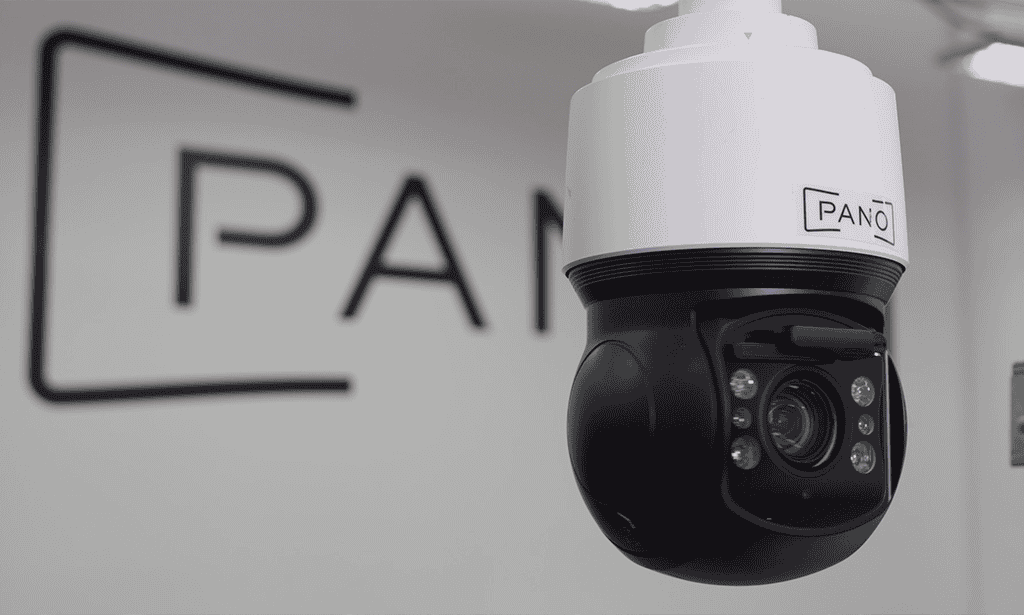
Pano AI leverages advanced artificial intelligence for real-time monitoring of urban environments. This technology utilizes drone and camera networks to collect data about infrastructure, traffic, and environmental conditions.
Benefits
- Pano AI’s system can spot wildfires quickly, allowing for faster response times and potentially saving lives and property.
- The technology provides valuable data that can help inform firefighting strategies and resource allocation.
- Pano AI’s solutions can be deployed across various regions, adapting to different landscapes and fire risks.
Possible Ramifications
- While Pano AI’s early detection system can be life-saving, there’s a risk that an over-reliance on AI might reduce the emphasis on traditional, human-led methods of fire management. It’s important that this technology complements, rather than replaces, manual monitoring, especially in regions with limited access to advanced AI infrastructure.
- The use of surveillance technology raises questions about data privacy and monitoring in communities.
Bottom Line
Pano AI represents a significant advancement in wildfire management through its innovative use of technology. While it offers promising benefits for early detection and response, balancing technological reliance with traditional methods will be crucial for effective fire management.
GraphCast
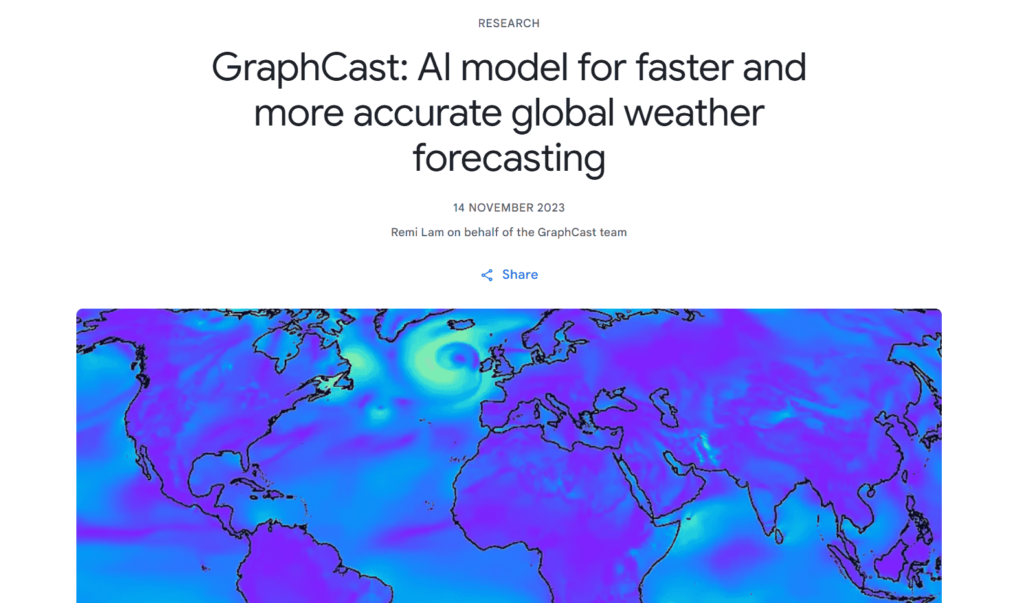
Google has developed an advanced AI model called GraphCast that can predict extreme weather events much more accurately and quickly than traditional methods. This model uses machine learning to analyze vast amounts of historical weather data, allowing it to forecast conditions up to 10 days in advance.
For instance, it successfully predicted Hurricane Lee’s landfall in Nova Scotia nine days ahead of time, which is significantly earlier than conventional forecasting methods could manage.
Benefits
- GraphCast can generate forecasts in under a minute, compared to hours for traditional models, making it incredibly efficient.
- The model has shown superior performance in predicting various weather variables, which enhances preparedness for extreme events like hurricanes and heatwaves.
- Google has made the model open source, allowing researchers and meteorologists worldwide to use and improve upon it.
Possible Ramifications
- With more accurate predictions, communities can better prepare for severe weather, potentially saving lives and reducing property damage.
- Traditional weather models require significant computational resources; GraphCast’s efficiency could lead to reduced energy consumption in weather forecasting.
Bottom Line
Google’s GraphCast represents a significant leap in weather prediction technology. Its ability to deliver faster and more accurate forecasts could transform how we respond to extreme weather events.
Health and pandemic preparedness
Health and pandemic preparedness are critical for the response and recovery of societies from large-scale health crises. Regarding the trend seen by the World Health Organization on pandemics, health systems need to be strengthened, and even greater collaboration needs to be used as a healthy tool to protect public health.
BlueDot

BlueDot is an innovative company that focuses on infectious disease surveillance using artificial intelligence. It gained attention for its ability to predict disease outbreaks, including being one of the first to alert about COVID-19 in December 2019.
Benefits
- BlueDot’s technology allows for early detection of infectious diseases, giving health officials a crucial head start in response efforts.
- Users report up to an 88% reduction in time spent on manual data analysis, allowing them to focus on critical decision-making tasks.
- The platform aggregates data from numerous sources, providing a comprehensive view of disease activity and trends.
Possible Ramifications
- While BlueDot’s AI enhances efficiency, there’s a risk that over-reliance on technology could reduce human oversight, potentially missing nuances that require expert judgment. It’s important that AI complements, rather than replaces, human decision-making.
- The extensive data collection necessary for effective surveillance raises questions about privacy and how personal information is handled.
Bottom Line
BlueDot represents a significant advancement in pandemic preparedness through its use of AI for disease surveillance. While it offers valuable insights and efficiency, careful consideration of privacy and the balance between technology and human oversight is essential.
CureMetrix
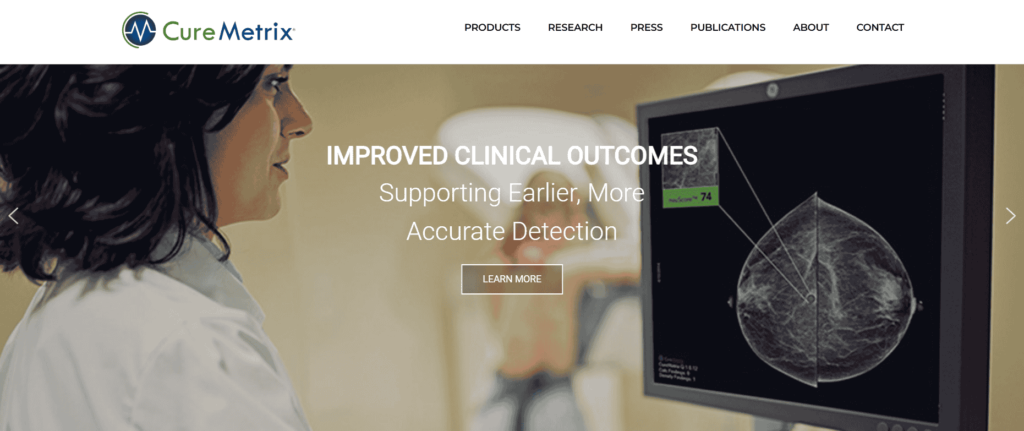
CureMetrix develops advanced artificial intelligence that enhances mammography readings. Its technology assists radiologists by providing more accurate assessments of breast tissue, helping to detect cancer earlier.
Benefits
- The AI algorithms help radiologists identify potential issues more accurately, reducing false positives and negatives.
- By enhancing the detection capabilities, CureMetrix contributes to earlier diagnosis of breast cancer, which can significantly improve treatment outcomes.
- The technology acts as a second opinion, helping radiologists make more informed decisions.
Possible Ramifications
- There’s a risk that radiologists might become overly dependent on AI tools, possibly diminishing their diagnostic skills over time, so it’s important to maintain a balance between technology and expertise.
- Integrating advanced AI systems into existing healthcare infrastructures may require significant investment.
Bottom Line
CureMetrix is at the forefront of improving breast cancer detection through innovative AI technology. While it enhances diagnostic accuracy and supports healthcare professionals, balancing reliance on technology with human expertise is crucial for optimal patient care.
Everlywell
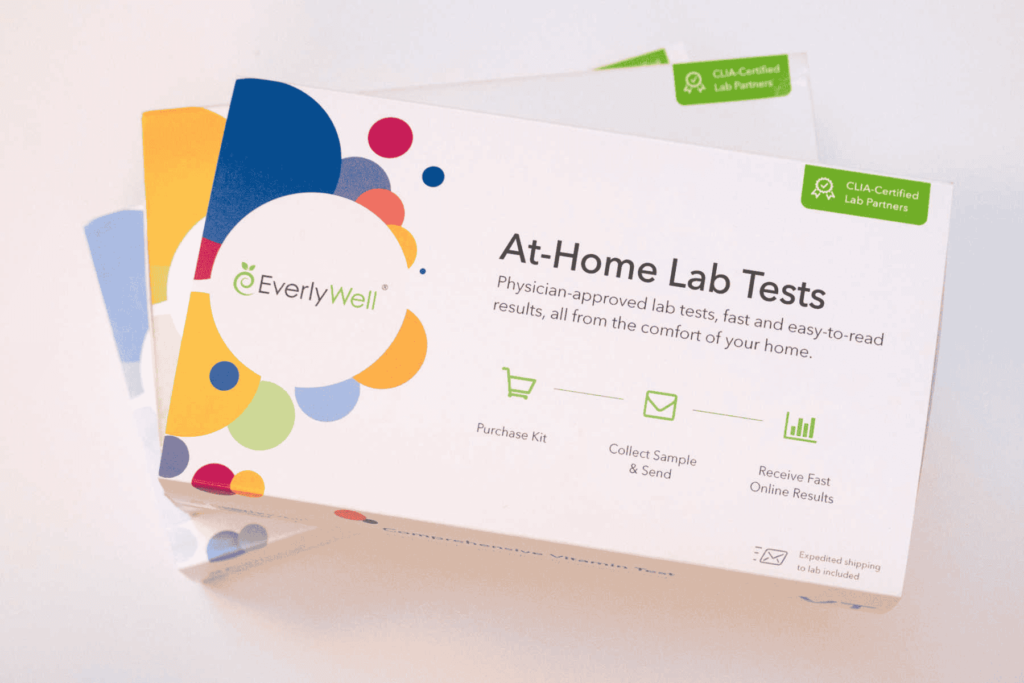
Everlywell offers at-home health testing kits that empower you to take charge of your health. With the convenience of testing from home, you can access a wide range of tests, from food sensitivity to hormone levels.
Benefits
- You can collect samples in your own environment, avoiding the hassle of traditional lab visits.
- Tests cover multiple health aspects, including metabolism, nutrition, and fertility.
- Results are delivered online, maintaining confidentiality and allowing individuals to manage their health discreetly.
Possible Ramifications
- Without professional guidance, users may misinterpret their test results or miss important follow-up steps, making it important to seek medical advice for accurate interpretation.
- At-home testing may not be as reliable as tests conducted in clinical settings due to potential user error in sample collection.
Bottom Line
Everlywell provides a convenient solution for individuals seeking to monitor their health from home. While at-home testing can be convenient, it’s essential to consult healthcare professionals for interpretation and further actions based on the results. It’s a practical option for those who appreciate autonomy in managing health.
Sustainable agriculture
Sustainable agriculture focuses on farming practices that protect the environment, public health, and animal welfare. It aims to meet current food needs without compromising future generations.
Agricultural Drones
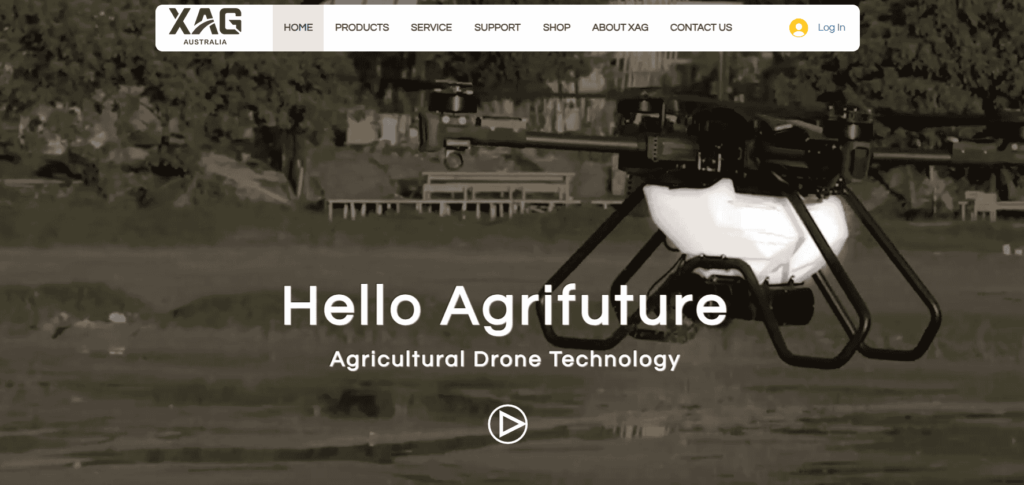
Agricultural drones are becoming increasingly popular in sustainable farming, and one notable brand is XAG Australia. These unmanned aerial vehicles (UAVs) are designed to assist farmers with various tasks, including crop monitoring, soil assessment, and precision spraying of fertilizers and pesticides.
Benefits
- Drones provide detailed aerial imagery that helps farmers make informed decisions about crop management, leading to more efficient resource use.
- Farmers can target pesticide and fertilizer applications more effectively, minimizing environmental impact by accurately identifying problem areas.
- They can cover large areas quickly, reducing the time needed for traditional scouting methods.
Possible Ramifications
- Farmers may need training to use drones effectively and interpret the data, which could be a barrier for some, especially those in rural or less tech-savvy areas.
- The initial investment for drones can be high, and ongoing maintenance and repairs could add extra costs, making them less accessible for smaller-scale farmers.
Bottom Line
Agricultural drones offer a promising tool for enhancing sustainable farming practices through precision and efficiency. While the initial investment and learning curve might be a consideration, they can provide significant benefits for farmers looking to optimize their operations.
AgriWebb
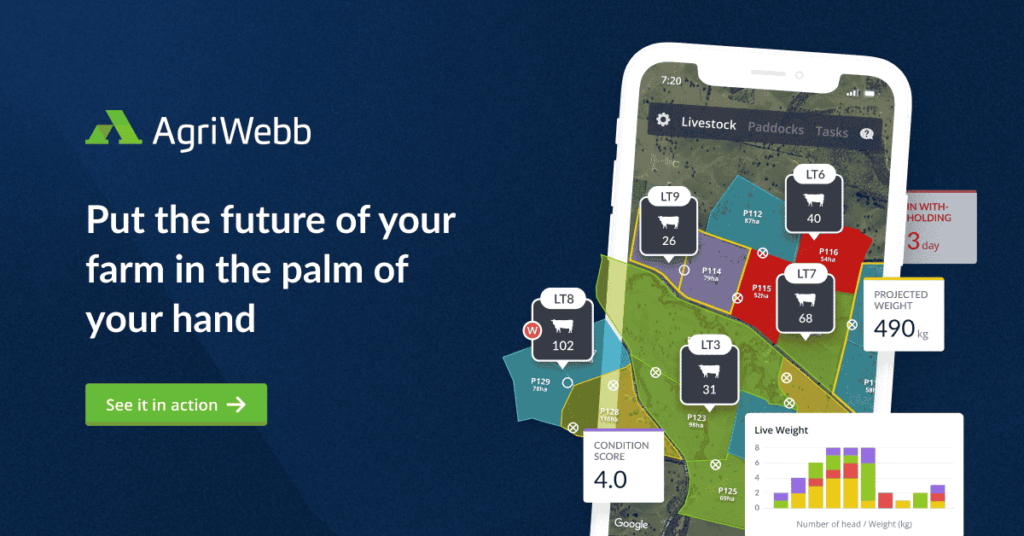
AgriWebb is a farm management software platform designed to help farmers streamline operations and improve sustainability. It allows users to track livestock, manage resources, and analyze data to make better farming decisions.
Benefits
- The platform simplifies tracking of farm activities, which can lead to improved compliance with sustainability standards.
- Farmers can analyze performance metrics to optimize production practices and resource use.
- It facilitates communication among farm staff, improving coordination and efficiency.
Possible Ramifications
- The ongoing fees for the software could be a challenge for smaller farms with limited budgets, especially in the early stages of adoption.
- Over reliance on software could lead to challenges if technical issues arise or if farmers lack digital literacy.
Bottom Line
AgriWebb provides valuable tools for farmers looking to enhance sustainability through better management practices. While it offers significant benefits in data utilization and efficiency, accessibility and ongoing costs are important considerations.
Blue River Technology
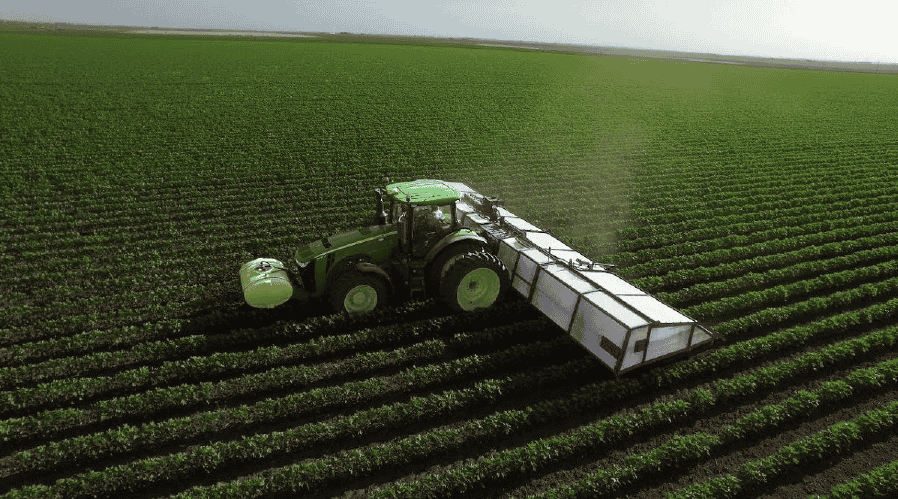
Blue River Technology specializes in developing smart agricultural solutions using machine learning and computer vision. The company’s See & Spray system uses advanced AI and machine learning. This technology identifies crops and weeds, allowing for selective spraying.
Benefits
- The technology allows farmers to apply inputs only where needed, reducing waste and environmental impact. Up to 80% reduction in herbicide application.
- Farmers can improve crop health and productivity by optimizing input use based on real-time data.
- Decreased chemical use lowers costs for farmers.
- Automation of certain tasks can decrease labor costs and improve operational efficiency.
Possible Ramifications
- Farmers may face challenges in adopting new technologies due to costs or lack of familiarity with advanced systems.
- As farm data is collected and analyzed, there are concerns about privacy and ownership, making it important to establish clear guidelines around data use and security.
Bottom Line
Blue River Technology is pushing the boundaries of sustainable agriculture with its innovative precision farming solutions. While it offers significant advantages in efficiency and productivity, addressing adoption barriers will be crucial for widespread implementation.
CropX
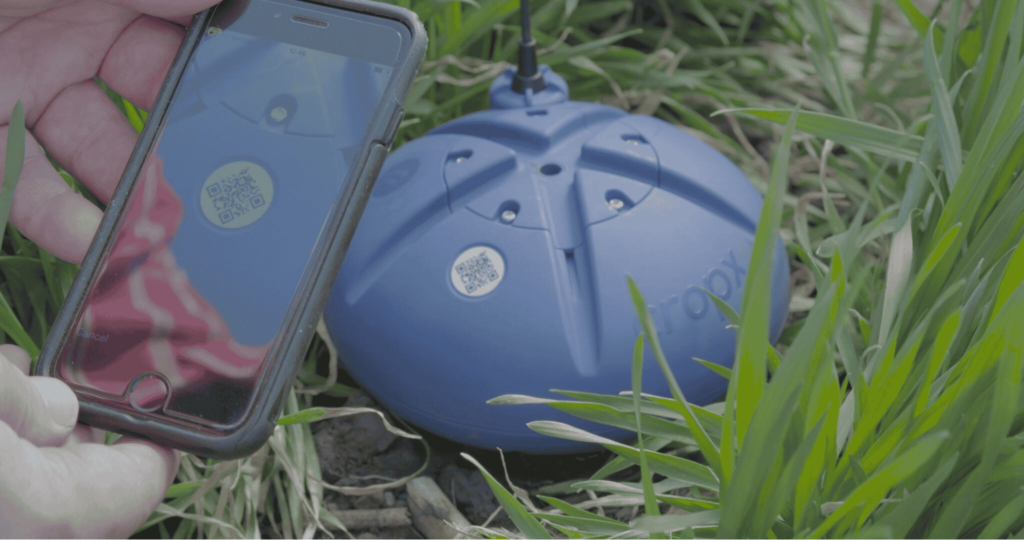
CropX is an innovative agronomic farm management system that utilizes AI and machine learning to connect various sources of farm data, providing real-time insights for sustainable farming practices. It focuses on optimizing resource use and improving crop yields through precise monitoring of soil conditions.
Benefits
- The system helps reduce water usage by over 40% while increasing crop yields by about 10%, promoting sustainable resource management.
- CropX provides accurate soil moisture, salinity, and temperature readings, enabling farmers to make timely decisions about irrigation and fertilization.
- Designed for ease of use, even those without extensive agronomic expertise can effectively utilize the platform.
Possible Ramifications
- The cost of implementing CropX technology may be prohibitive for small-scale farmers.
- Relying heavily on digital solutions could lead to challenges if technical issues arise or if farmers lack digital literacy.
Bottom Line
CropX is transforming sustainable agriculture with its advanced data analytics and user-friendly platform. While it offers significant benefits in resource efficiency and crop management, the financial and technical barriers to adoption must be addressed.
SoilScout

SoilScout specializes in providing underground soil monitoring solutions through wireless sensors that deliver real-time data directly from the soil. This technology helps farmers make informed decisions about irrigation and nutrient management.
Benefits
- SoilScout sensors provide precise measurements of soil moisture, temperature, and nutrient levels, allowing for targeted agricultural practices.
- Farmers can significantly reduce water usage while maintaining healthy crops by optimizing irrigation based on real-time data.
- Continuous monitoring helps prevent crop stress by ensuring that plants receive the right amount of water and nutrients at the right time.
Possible Ramifications
- Maintaining the sensors and setting up the necessary infrastructure could increase operational costs and require technical expertise, which may be challenging for some farmers.
- Farmers may struggle to interpret large amounts of data without proper support or training.
Bottom Line
SoilScout offers a cutting-edge solution for real-time soil monitoring that enhances sustainable farming practices. While it provides valuable insights for improved resource management, addressing installation and maintenance challenges is essential for widespread adoption.
TerraPrima Ladybird

TerraPrima Ladybird is an innovative agricultural technology that focuses on enhancing soil health through biological solutions. It aims to improve soil fertility and crop productivity while promoting sustainable farming practices.
Benefits
- TerraPrima Ladybird enhances microbial activity in the soil, leading to better nutrient availability for crops.
- Farmers can achieve higher yields without relying heavily on chemical fertilizers by improving soil quality.
- The product supports eco-friendly farming methods that align with sustainable agriculture goals.
Possible Ramifications
- The effectiveness of biological products can vary based on environmental conditions and specific crop needs.
- Some farmers may be hesitant to switch from conventional methods to biological solutions due to unfamiliarity or skepticism about efficacy.
Bottom Line
TerraPrima Ladybird represents a promising approach to enhancing soil health through biological solutions in agriculture. While it offers significant benefits for sustainability and cost savings, addressing variability in results and regulatory hurdles will be crucial for broader acceptance.
Renewable energy and sustainability
Renewable energy is considered pertinent in a sustainable future because it uses natural sources, including sun, wind, and water, for generating clean energy. This in turn reduces the carbon footprint and regulates climate change. An interesting fact here is that renewable energy sources accounted for about 29% of global electricity generation in 2020, signifying their increasing relevance.
Tesla Powerwall

The Tesla Powerwall is a home battery system designed to store energy from solar panels or the grid, providing backup power during outages and helping homeowners manage their electricity use more efficiently.
Benefits
- The Powerwall automatically kicks in during power outages, ensuring that essential appliances stay powered.
- Homeowners can store excess solar energy generated during the day for use at night or on cloudy days.
- With a Powerwall, homeowners can rely less on the grid and reduce their carbon footprint.
- It allows homeowners to store energy during off-peak hours and use it during peak times, reducing electricity bills.
Possible Ramifications
- The price tag for a Powerwall can be around $11,500, which might be out of reach for many families.
- Not all solar systems are compatible with the Powerwall, which might require additional investments in equipment.
Bottom Line
The Tesla Powerwall offers homeowners a way to boost energy independence and lower electricity bills. While its cost and installation challenges may limit its accessibility, its benefits make it a strong option for those looking to reduce their carbon footprint and reliance on the grid.
Solar energy

Solar energy harnesses sunlight to generate electricity or heat, making it one of the most accessible forms of renewable energy. A prominent player in this field is SunPower, known for its high-efficiency solar panels that maximize energy production even in limited spaces. As technology advances, solar panels are becoming more efficient and affordable, making them an attractive option for homeowners.
Benefits
- Homeowners can save money by generating their own electricity and reducing reliance on the grid. SunPower panels are among the most efficient on the market, converting up to 22.8% of sunlight into electricity, which means homeowners can generate more power with fewer panels.
- Solar energy produces no greenhouse gas emissions during operation, contributing to cleaner air.
- Generating power from sunlight allows homeowners to become less dependent on fossil fuels.
- The growth of the solar industry has led to numerous job opportunities in manufacturing, installation, and maintenance.
Possible Ramifications
- Solar energy production depends on sunlight availability, which can be inconsistent due to weather conditions or time of day.
- Installing solar panels requires adequate roof space or land, which might not be feasible for everyone.
- While prices have dropped, the upfront cost of purchasing and installing solar panels can still be significant.
Bottom Line
Solar energy is a powerful tool for promoting sustainability and reducing utility costs. Despite challenges like intermittency and initial costs, the advantages make it a worthwhile investment for many.
Smart Grids
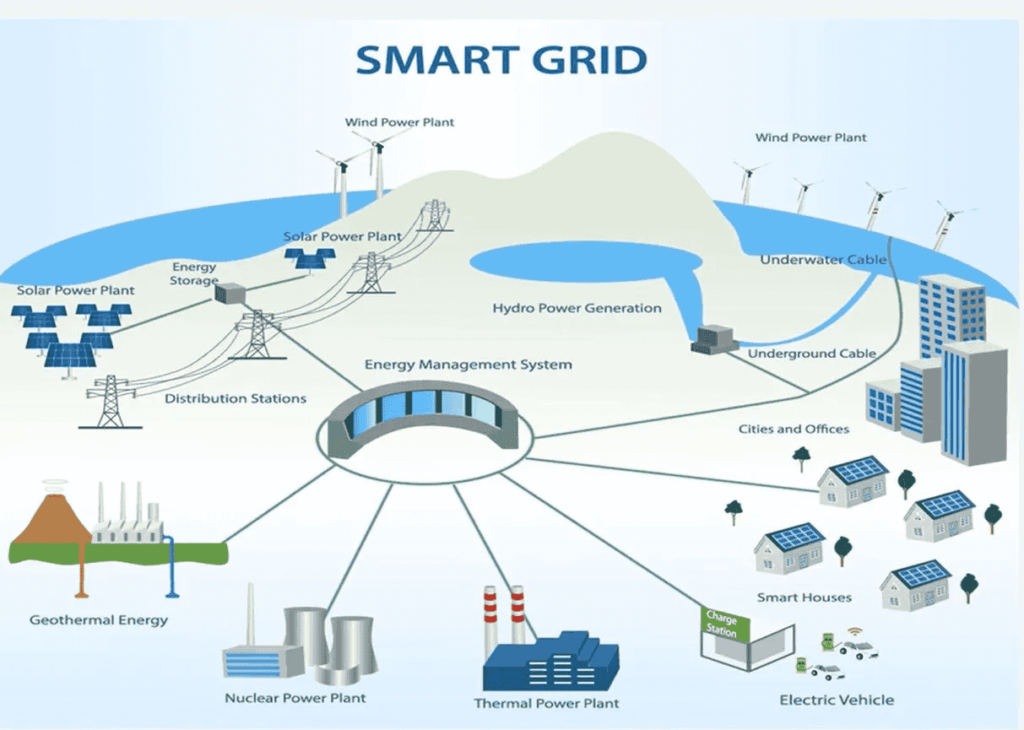
Smart grids utilize digital technology to enhance the efficiency and reliability of electricity distribution. They allow for real-time monitoring and management of electricity flow from various sources.
Benefits
- Smart grids facilitate the integration of renewable energy sources into the grid, promoting cleaner energy use.
- Smart grids can quickly identify and respond to outages, minimizing downtime for consumers.
- They optimize electricity distribution based on demand, reducing waste and improving overall system performance.
- Users gain better insights into their energy consumption patterns, allowing for more informed decisions about usage.
Possible Ramifications
- Increased connectivity makes smart grids vulnerable to cyberattacks that could disrupt service or compromise data.
- Upgrading existing infrastructure to smart grid technology can be expensive and may require significant investment from utilities.
Bottom Line
Smart grids represent a significant advancement in how we manage electricity distribution. While they offer numerous benefits in efficiency and reliability, addressing cybersecurity risks and implementation costs is crucial for successful integration.
DeepMind’s AI for Energy Efficiency
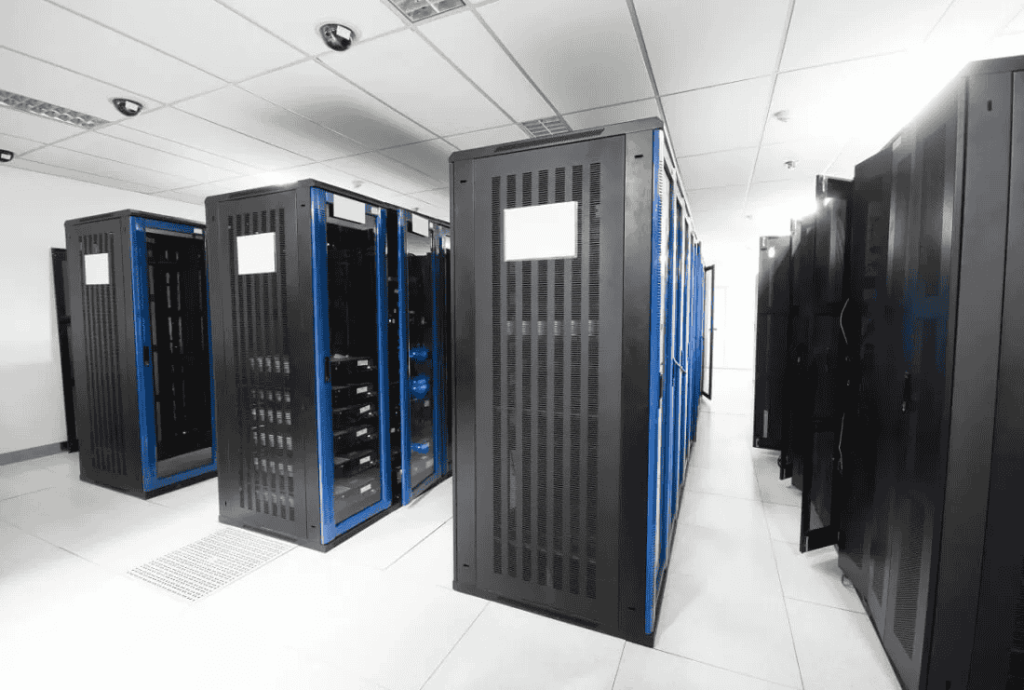
DeepMind has developed AI technologies aimed at optimizing energy usage in various settings, including data centers. Their algorithms analyze data to reduce energy consumption while maintaining performance levels.
Benefits
- DeepMind’s AI has reportedly reduced energy usage by up to 40% in some applications, leading to substantial cost savings.
- The technology can be applied in various sectors beyond data centers, including manufacturing and transportation.
- AI-driven insights help organizations streamline operations and minimize waste in energy use.
- DeepMind’s solutions contribute to broader efforts in reducing carbon footprints by optimizing energy consumption.
Possible Ramifications
- Relying heavily on AI could lead organizations to overlook traditional methods of efficiency improvement.
- The collection of usage data raises questions about privacy and how this information is managed. Organizations will need to ensure that data privacy is adequately addressed to prevent misuse.
Bottom Line
DeepMind’s AI for energy efficiency showcases the potential of technology to drive sustainability in various industries. While it offers impressive savings and operational improvements, careful consideration of privacy and implementation challenges is necessary for effective adoption.
Will tech drive even more change in the coming years?
Absolutely! As we look ahead, technology is set to drive even more transformative changes across various sectors. The rapid advancement of AI, machine learning, and renewable energy technologies will likely lead to innovative solutions that address pressing issues like climate change and social inequality.
As businesses and governments increasingly recognize the importance of sustainability and social responsibility, we can expect a surge in tech initiatives aimed at creating a positive impact.
Final thoughts
The idea of “tech for good” presents a powerful opportunity to innovate with social and environmental welfare as a priority. With numerous examples of how technology can drive meaningful change, it’s clear that we’re only beginning to tap into its full potential. These developments will only become more achievable over time. We can build a future where everyone benefits from technological advancements through creativity and collaboration.

